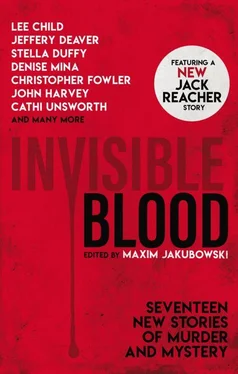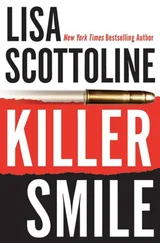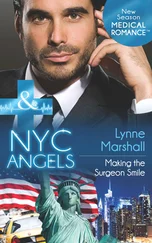Ли Чайлд - Smile
Здесь есть возможность читать онлайн «Ли Чайлд - Smile» весь текст электронной книги совершенно бесплатно (целиком полную версию без сокращений). В некоторых случаях можно слушать аудио, скачать через торрент в формате fb2 и присутствует краткое содержание. Город: London, Год выпуска: 2019, ISBN: 2019, Издательство: Titan Books, Жанр: Триллер, на английском языке. Описание произведения, (предисловие) а так же отзывы посетителей доступны на портале библиотеки ЛибКат.
- Название:Smile
- Автор:
- Издательство:Titan Books
- Жанр:
- Год:2019
- Город:London
- ISBN:9781789091328, 9781789091335
- Рейтинг книги:3 / 5. Голосов: 1
-
Избранное:Добавить в избранное
- Отзывы:
-
Ваша оценка:
- 60
- 1
- 2
- 3
- 4
- 5
Smile: краткое содержание, описание и аннотация
Предлагаем к чтению аннотацию, описание, краткое содержание или предисловие (зависит от того, что написал сам автор книги «Smile»). Если вы не нашли необходимую информацию о книге — напишите в комментариях, мы постараемся отыскать её.
Smile — читать онлайн бесплатно полную книгу (весь текст) целиком
Ниже представлен текст книги, разбитый по страницам. Система сохранения места последней прочитанной страницы, позволяет с удобством читать онлайн бесплатно книгу «Smile», без необходимости каждый раз заново искать на чём Вы остановились. Поставьте закладку, и сможете в любой момент перейти на страницу, на которой закончили чтение.
Интервал:
Закладка:
Lee Child
Smile
The guy who put together the video evidence highlight reel was a nerdy young timeserver named Skelton. Every day, rain or shine, warm or cold, he wore a checked flannel shirt and a knit tie. No one liked him. But pedantry and exactitude were required in his role. Juries still regarded video evidence as vulnerable, especially when it got blurry and out of focus. And the recent algorithmic add-ons were mostly seen as woo-woo filmflam, without a serious guy in a knit tie to explain them all. Facial recognition, gait analysis, and so on and so forth. Very complicated, down at the scientific level. Skelton had his uses.
He started out by saying, “Obviously we're lucky because this is London, and this is its main long-haul airport, which means we have at our disposal more cameras than literally anywhere else in the world. We can follow along, in real time, virtually every step of the way. Ready?”
Nominally in charge of the investigation was a Detective Chief Superintendent named Glover, but all morning he had been accompanied by three unknown associates, all with visitor tags around their necks, all younger than himself, two of them women, one believed to be from the Foreign Office, and the other from MI6. The third unknown associate was me, believed to be from the American CIA. Whatever, the women and I seemed to make all the final decisions. As in right then, when Skelton asked Glover, and Glover looked at the women, who looked at each other, and then at me, and I nodded, whereupon Glover said to Skelton, “Yes, ready.”
A uniformed officer closed the door. The room went quiet. We were in the basement underneath New Scotland Yard. Skelton started the highlight reel. The first shot was a downward angled view along three drop-off bays at the first-class end of BA departures. The picture was huge, on a monitor bigger than most home TVs. It was in bright colour. It was crisp and detailed. Nothing like the old days.
On the screen a car pulled into the furthest-away bay. A late-model Bentley Flying Spur sedan. Not quite black. Some kind of dark gunmetal grey. Both rich and sinister.
“Looking for attention,” a detective said. “Or he would have come in a black S-class Mercedes, like everyone else.”
On the screen two men got out the front of the Bentley. The driver walked around to the trunk. The passenger stood for a second, glancing all around, and then he opened the rear door and stood back, respectfully, but still glancing all around.
“Bodyguard,” the detective said. “Somewhat superfluous. That's the safest location in England.”
On the screen a big bulky man in a dark wool overcoat got out the back of the Bentley. He stood for a second, half turned away, facing his bodyguard, adjusting the fit of his coat on his shoulders. Then he turned toward the rear of his car and looked down, as if at something low to the ground about ten feet away, and then he turned more and looked up, as if checking on his driver's progress, hauling luggage out the trunk. For a steady second, his face was clearly visible.
Skelton froze the playback.
“That's Anenko,” he said.
“Are we absolutely sure?” Glover asked. “We'd look like fools if we misidentified the chap right from the beginning.”
“Watch this,” Skelton said. He rolled the action back, frame by frame, to where the guy in the coat was once again turned mostly away, looking down low. He froze the picture like that and said, “Heathrow is thick with cameras, but what you need to remember is, for every one you can see, there are probably fifty more you can't. Because they're hidden. They're disguised as other things, or built into things. Lots of them are waist-high, looking up, so a wide-brimmed hat doesn't work so well anymore. Some of them are knee-high, looking up.”
He clicked a mouse and the picture changed to a new view of the same instant. Now the camera was head-on to the guy, low down, so that the more he hunched away from his car, the more he leaned in toward the new lens, as if welcoming it, as if embracing it.
Skelton clicked again on a couple of options, and powerful software froze the picture and rotated it up a little, and left a little, until it was like a head-on mug shot of the guy. All kinds of fine pulsating lines darted here and there, as if pointing out areas of interest, and then finally a graph appeared, printed in glowing green, above a caption that said Level Of Confidence 100% .
“It's Anenko,” Skelton said. “No doubt about it. We ran it through three separate facial recognition systems and they all agreed. Between them they had more than a hundred images to compare against. Some of them dated back to the Soviet era. Most are recent and undeniably authentic.”
“Good enough,” Glover said. “I suppose.”
On the screen the scene picked up again from the original high angle. The driver pulled a suitcase out and set it upright and extended its handle. He followed it with a briefcase. The bodyguard took charge of both pieces. Anenko led the way, and the bodyguard followed, like a porter. They walked to the edge of the frame.
“Now watch,” Skelton said.
On the screen a black S-class Mercedes sedan pulled into the bay behind the Bentley. At the top of the picture the terminal doors opened for Anenko and his bodyguard. At the bottom of the picture the rear passenger door opened on the Mercedes. At the top Anenko and his bodyguard stepped into the building. At the bottom the passenger stepped out to the sidewalk.
Skelton froze the image. He chopped the screen into three separate panels and loaded each one with a different angle, the first being Anenko and his bodyguard walking down the approach corridor, which led from the street to the main departures hall itself. They were walking head-on toward a camera, which was also bright and in colour and crisply detailed. Insanely detailed, in fact. Beyond the bodyguard, back out through the glass door to the street, tiny figures were clearly visible, moving about. Who they were was made clear by the centre panel of Skelton's array. It showed the same high-angle scene as before, now with the driver getting back in the Bentley, and in the bay behind it the passenger from the Mercedes closing his door and stepping toward the terminal. He took nothing with him except a small canvas messenger bag on a leather strap. He walked with his shoulders back, his head up and his eyes front. He wore no hat or glasses.
“He knows there are cameras,” the detective said. “He's been well briefed. He's been told he can't beat them. So he's not even trying.”
On the third panel Skelton froze a suitable head-on shot of the guy's face.
“Now they all walk for quite a long while,” he said. “It's an airport terminal, after all. That's the longest most folks walk all year. We might as well use the time.”
He clicked his mouse. The frozen image on the third panel tilted and rotated and arranged itself into a mug shot, and the same thin pulsating lines darted about, followed by a graph identical to the first, with the same caption: Level Of Confidence 100%.
“Who is he?” Glover asked.
Skelton said, “First I need to make clear this conclusion is based on only five known images. Statistically that's enough for the algorithm. But a jury wouldn't understand the arithmetic. The numbers are too far apart. A hundred per cent but only five pictures.”
“Who is he?” Glover asked again.
“He's an American citizen.”
Glover glanced at the Foreign Office woman, who glanced at the MI6 woman, and then they both glanced at me, and I shrugged and nodded, both at the same time, as if to say, what did I care?
Glover asked, “Does he have a name?”
“Jack Reacher,” Skelton said. “Jack not a diminutive for John, and no middle name. He's a West Point graduate. He was in the U.S. Army for thirteen years. There are two military ID photographs in the system. Plus two passport photographs. The fifth known image is from French intelligence. They photographed him at his mother's funeral, in Paris.”
Читать дальшеИнтервал:
Закладка:
Похожие книги на «Smile»
Представляем Вашему вниманию похожие книги на «Smile» списком для выбора. Мы отобрали схожую по названию и смыслу литературу в надежде предоставить читателям больше вариантов отыскать новые, интересные, ещё непрочитанные произведения.
Обсуждение, отзывы о книге «Smile» и просто собственные мнения читателей. Оставьте ваши комментарии, напишите, что Вы думаете о произведении, его смысле или главных героях. Укажите что конкретно понравилось, а что нет, и почему Вы так считаете.












